THE ODEON THEATRE
WESTON SUPER MARE
&
THE COMPTON THEATRE ORGAN
-oOo-
PART I: INTRODUCTION TO
THE ODEON THEATRE/CINEMA
WESTON SUPER MARE
-oOo-
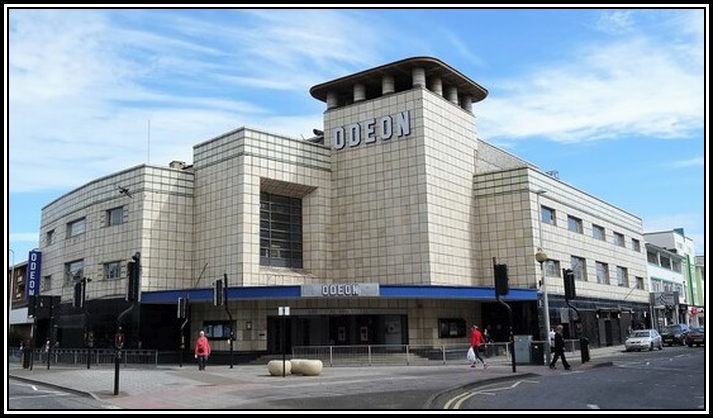 The Odeon Theatre Weston Super Mare (2017)
The Odeon Theatre Weston Super Mare (2017)
(Photograph provided by Paul Bland)
On Monday, June 5th, 2023, the Odeon Theatre/Cinema Weston Super Mare closed with no plans to re-open anytime soon. Closure came eighty-eight years and one month after its opening on May 25th, 1935. The reason given for this sad occurrence, as stated by the current owners, Odeon Cinema Group (part of AMC Entertainment Holdings), was that the cinema was no longer viable.
The Odeon was one of three venues remaining in the U.K. where a Compton Theatre Organ had originally been installed and was still regularly played. The other venues are the Odeon Theatre/Cinema Leicester Square (now known as the Odeon Luxe) and the Plaza Theatre in Stockport.
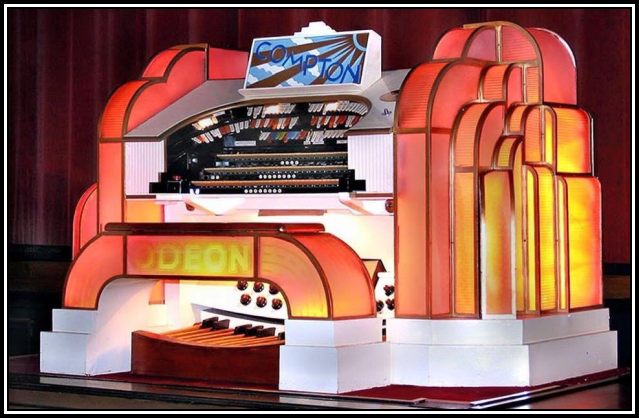 The Compton Theatre Organ of The Odeon Theatre Weston Super Mare
The Compton Theatre Organ of The Odeon Theatre Weston Super Mare
-oOo-
On Sunday, May 21st, 2023, the renowned Theatre Organist, Michael Wooldridge, gave what would seem to be the final concert (for the present that is!), which was sponsored by the Theatre Organ Club.
-oOo-
At the time of writing, what will happen to The Odeon Theatre Weston Super Mare (and The Compton Theatre Organ) awaits decision.
-oOo-
THE BUILDING OF THE THEATRE/CINEMA
-oOo-
The Odeon Theatre/Cinema Weston Super Mare was built for The Odeon Cinema Circuit founded by Oscar Deutsch (1893-1941). The publicists of The Circuit let it be known that the name Odeon stood for Oscar Deutsch Entertains Our Nation. However, the name comes from the Ancient Greek, ᾨδεῖον, Ōideion, meaning a place for singing.
By 1937, The Circuit had opened 270 cinemas, although, like Sydney Bernstein (1899-1993) founder of The Granada Theatre Circuit, it is said that Mr. Deutsch liked to think of these venues as Theatres rather than Cinemas. It is also said that Mr. Deutsch was not fond of The Theatre Organ, however he did have good business sense and so had them installed in his venues. The Odeon buildings were known for their comfort and for their Art Deco architecture and for their ushers and usherettes smartly dressed in chocolate-coloured attire with gold trimmings.
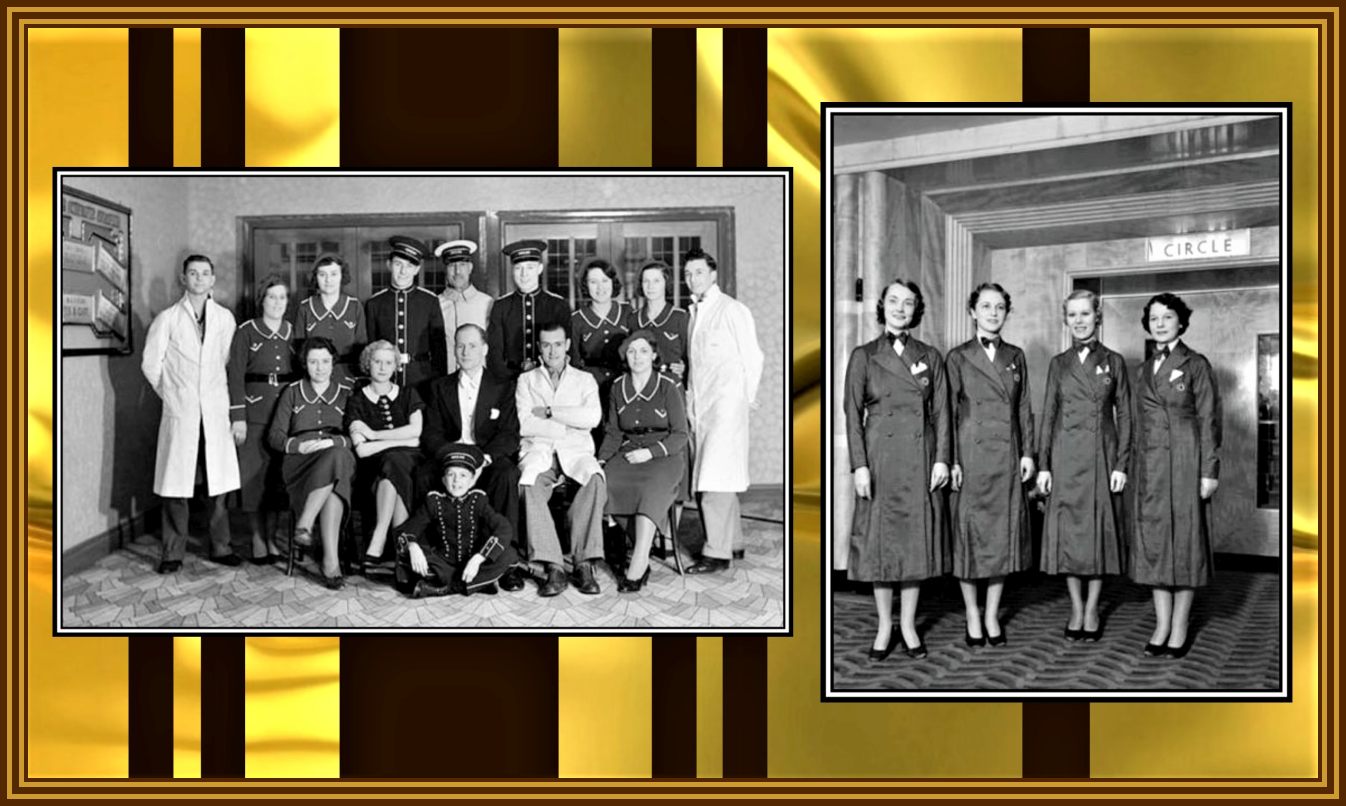 Left: The Staff of the Odeon Theatre Isleworth (1935);
Left: The Staff of the Odeon Theatre Isleworth (1935);
Right: The Usherettes of the Odeon Theatre Leicester Square (1937)
(Photographs reproduced with the permission of Historic England)
-oOo-
Odeon Theatres Limited commissioned the architect Thomas Cecil Howitt (1889–1968) to provide plans for the building of a Super Cinema in Weston Super Mare. This was one of four cinemas that Mr. Howitt provide plans for Odeon Theatres Limited. The other Odeons that Mr. Howitt designed were those at Warley (1934), Clacton and Bridgewater (both 1936) and each had similar moderne features.
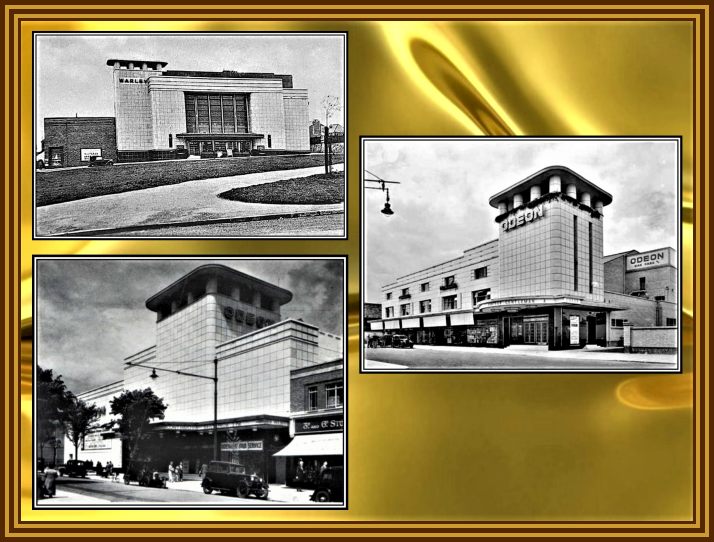 The Other Odeons Theatres/Cinemas designed by Thomas Cecil Howitt
The Other Odeons Theatres/Cinemas designed by Thomas Cecil Howitt
Top Left: Odeon Theatre Warley;
Bottom Left: Odeon Theatre Clacton; and Right: Odeon Theatre Bridgwater
-oOo-
The future Odeon in Western Super Mare was built on a prominent corner site where once the former Electric Premier Cinema had stood. Construction took place between 1934 and 1935 with the principal building contractor being C. Bryant & Son Limited of Birmingham. In addition to the cinema, the building also included space for a parade of shops along the Walliscote Road side.
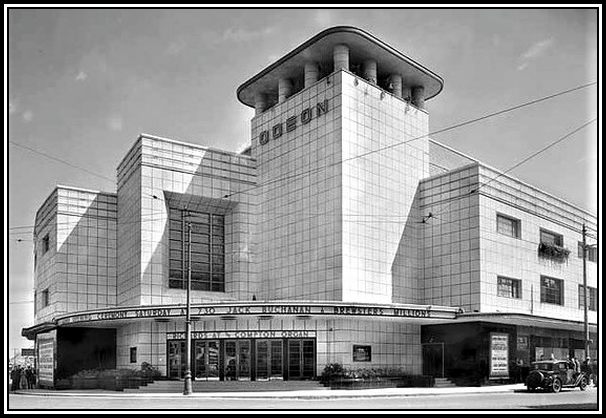 The Odeon Theatre Weston Super Mare (1935)
The Odeon Theatre Weston Super Mare (1935)
(Photograph reproduced with permission of Historic England)
-oOo-
THE MAIN EXTERNAL FEATURES OF
THE THEATRE/CINEMA
The building has a square tower with a projecting slab roof supported by twelve short pillars positioned to the right of the main entrance and was built at the corner of Walliscote Road and Regent Street (known as The Centre).
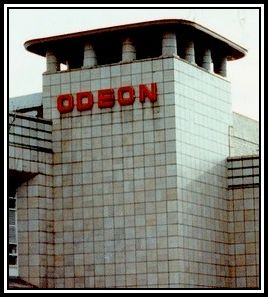 The Square Tower and Twelve Short Pillars
The Square Tower and Twelve Short Pillars
(Photograph provided by Paul Bland)
To the left of the tower and above the entrance is a simple block with a large window in recess with Critall frames.
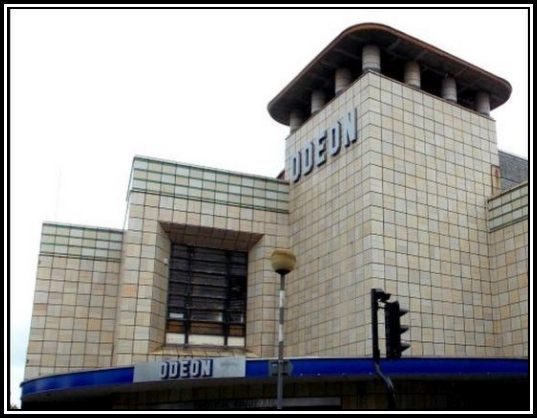 The Tower and The Large Window in recess (Photograph provided by Paul Bland)
The Tower and The Large Window in recess (Photograph provided by Paul Bland)
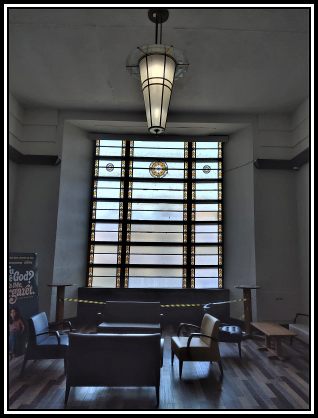 The Large Window seen from inside the Theatre/Cinema (2023)
The Large Window seen from inside the Theatre/Cinema (2023)
(Photograph provided by Peter Simpson)
On either side of the entrance along both Walliscote Road and Regent Street are blocks of three floors. The upper two floors have a number of windows also with Crittall frames while the lower floor along Walliscote Road was planned to house a parade of shops. Emergency exit doors are found on Regent Street.
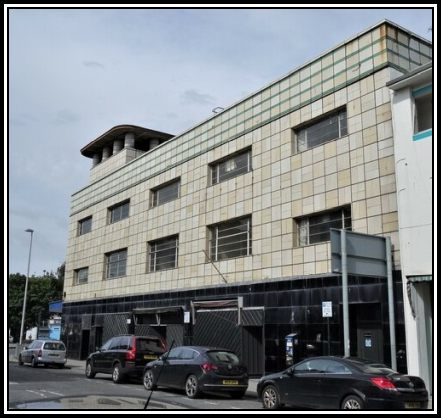 Once the Site of the Ground Floor Parade of Shops on Walliscote Road;
Once the Site of the Ground Floor Parade of Shops on Walliscote Road;
(Uploaded to Cinema Treasures by Brian Evans)
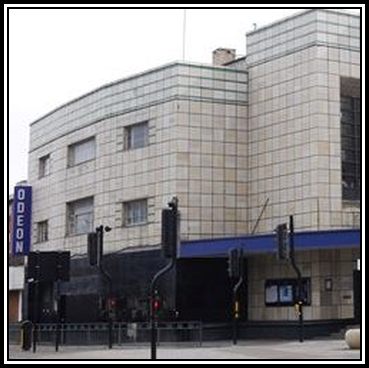 Emergency Exit Doors on Regent Street
Emergency Exit Doors on Regent Street
(Photograph provided by Paul Bland)
The building is faced with buff and cream Faience Tiles together with horizontal bands incorporating green tiles to the parapets and sides of the windows.
 Faience & Green Tiling
Faience & Green Tiling
Leading up to the five double entrance doors are four curved steps and, originally, extending around the entrance along both Regent Street and Walliscote Road, was a curved canopy extension. Later, these canopies were removed.
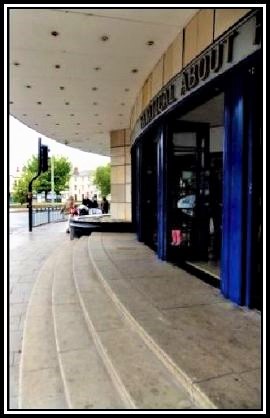 The Curved Entrance Steps
The Curved Entrance Steps
(Photograph provided by Paul Bland)
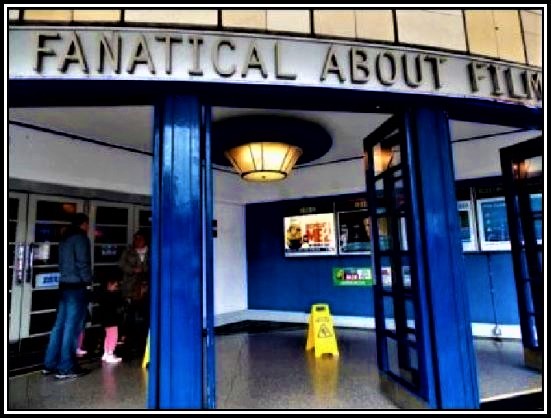 Looking through the Entrance Doors
Looking through the Entrance Doors
(Photograph provided by Paul Bland)
-oOo-
I have always found the finished Odeon at Weston Super Mare to be a very fine and imposing building and a great example of Art Deco design that was equally impressive at night.
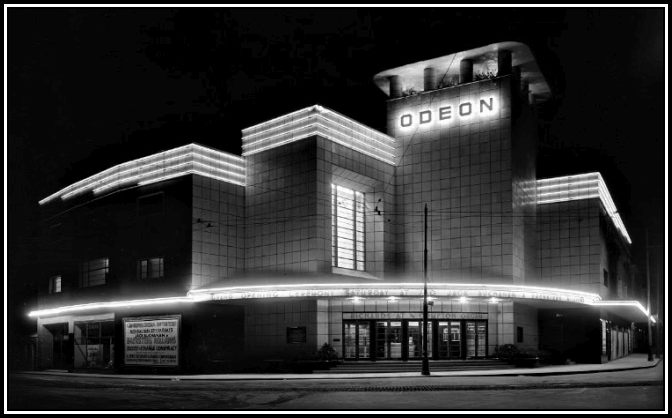 The Odeon Theatre Weston Super Mare (1935) at night
The Odeon Theatre Weston Super Mare (1935) at night
(Photograph reproduced with the permission of Historic England)
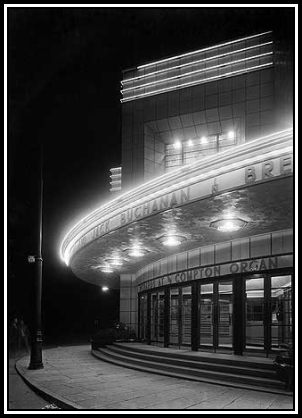 The Entrance (1935) at night;
The Entrance (1935) at night;
(Uploaded to Cinema Treasures by Granola)
Horizontal bands of neon lighting had been incorporated in line with the green Faience Tiles around the building and along the parapets and sides of the windows. Sadly, at some time, the neon lighting was removed. (A great loss in my opinion.)
-oOo-
THE INTERIOR OF THE THEATRE/CINEMA
-oOo-
The Vestibule and Reception Foyers/Lounges (Stalls & Circle) were decorated in a Minimalist yet elegant style, since this was the taste of Mr. Deutsch. Although Minimalist in design, there were a number of plants and seats for patrons to enjoy before entering the auditorium.
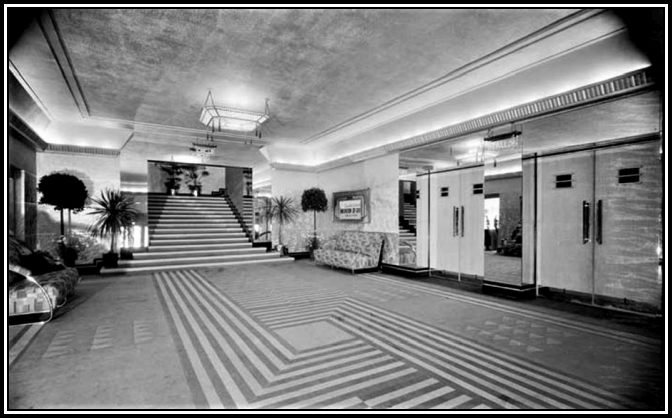 The Stalls Foyer/Lounge showing the Entrance Doors to the Auditorium and
The Stalls Foyer/Lounge showing the Entrance Doors to the Auditorium and
Stairs leading up to the Circle
(Uploaded to Cinema Treasures by Granola)
The stairs shown in this photograph led patrons to the Circle Foyer/Lounge and Entrance Doors to the Circle seating area.
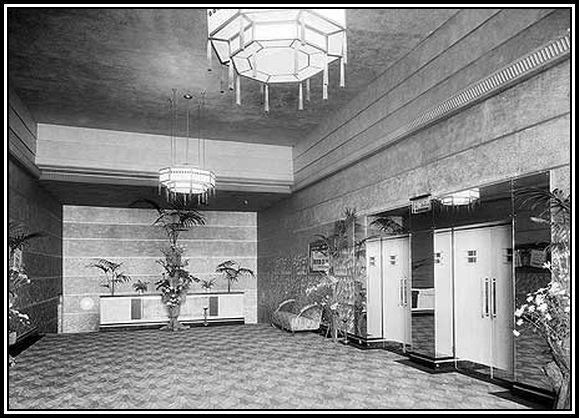 The Circle Foyer/Lounge
The Circle Foyer/Lounge
(Uploaded to Cinema Treasures by Granola)
-oOo-
Mr. Deutsch preferred simplistic interiors for his Theatres. He chose plain mouldings with an extensive use of concealed coved lighting for the Auditoria of Odeon Theatres. The lighting was concealed in troughs that stretched across the ceiling and in three back-lit recesses that bordered the Proscenium opening. Further concealed subtle lighting came from recessed rectangular ceiling features. The Auditorium had no grill-work or wall murals to intrude on the overall Minimalist plan.
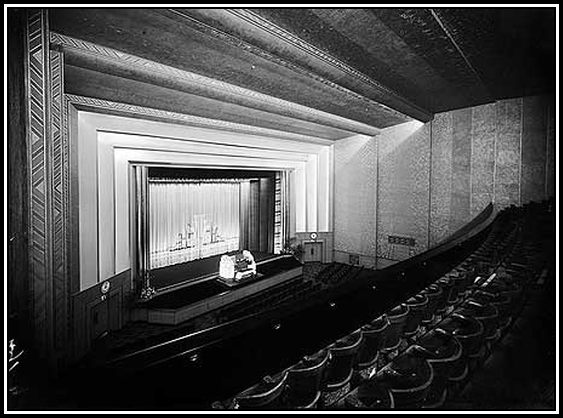 View of The Stage, Theatre Organ & Auditorium from The Circle
View of The Stage, Theatre Organ & Auditorium from The Circle
Note the presence of an Odeon Clock above the doors on either side of the stage
(Uploaded to Cinema Treasures by Granola)
 View of The Auditorium & The Circle from the right side of the front Stalls
View of The Auditorium & The Circle from the right side of the front Stalls
Note that the top of The Theatre Organ may be seen on the right
and the presence of an Odeon Clock above Exit Door to the left of the stage
(Uploaded to Cinema Treasures by Granola)
The Theatre/Cinema offered seating for 1,807 patrons with seating for 1,174 in the Stalls and 633 in the Circle. All seating was of a luxurious design, as was the carpeting. Mr. Deutsch insisted on the screening of only first rate films in his Theatres/Cinemas.
-oOo-
ODEON CLOCKS
The Theatres of the Odeon Circuit had wonderful clocks that were Octagonal in shape. An Octagon is an eight-sided geometric shape with equal sides and with eight angles. I remember seeing the clock for the first time when I went to the Odeon Theatre/Cinema Hackney Road as a child.
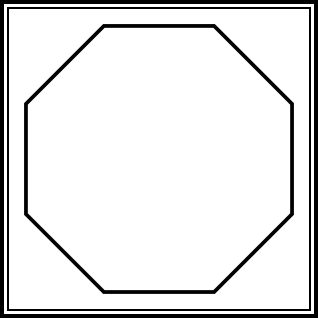 An Octagon
An Octagon
The Octagonal-Odeon shaped Clock was first seen at the Odeon Theatre/Cinema Weston Super Mare and were installed subsequently at all Odeon Theatres built thereafter.
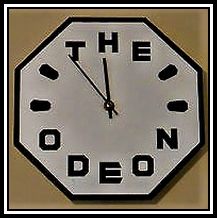 The Odeon Clock
The Odeon Clock
-oOo-
A few years ago, a friend and myself made a replica of The Odeon Clock and today it hangs on the wall above my bed. My friend cut out the letters, T-H-E O-D-E-O-N, for this wonderful replica (although I fear the colours do not quite represent those of The Odeon Circuit since I was unable to find them!).
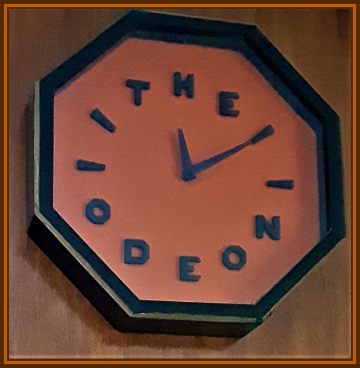
I also have a simple Octagonal-shaped wall clock that I found at a Boot Sale a few years ago, which now looks down from a wall in my kitchen.
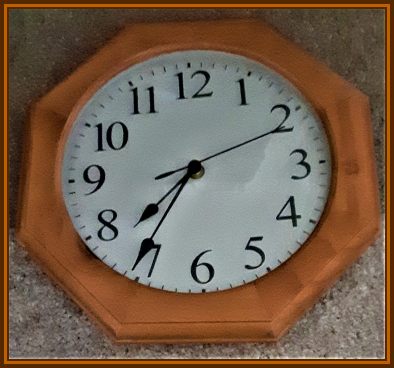
-oOo-
THE COMPTON THEATRE ORGAN
Oscar Deutsch apparently was not fond of The Theatre Organ and had only nine such instruments installed in his Circuit, but did include the Odeon Theatre/Cinema Weston Super Mare.
Keith Beckingham at The Compton Theatre Organ of
The Odeon Theatre/Cinema Weston Super Mare
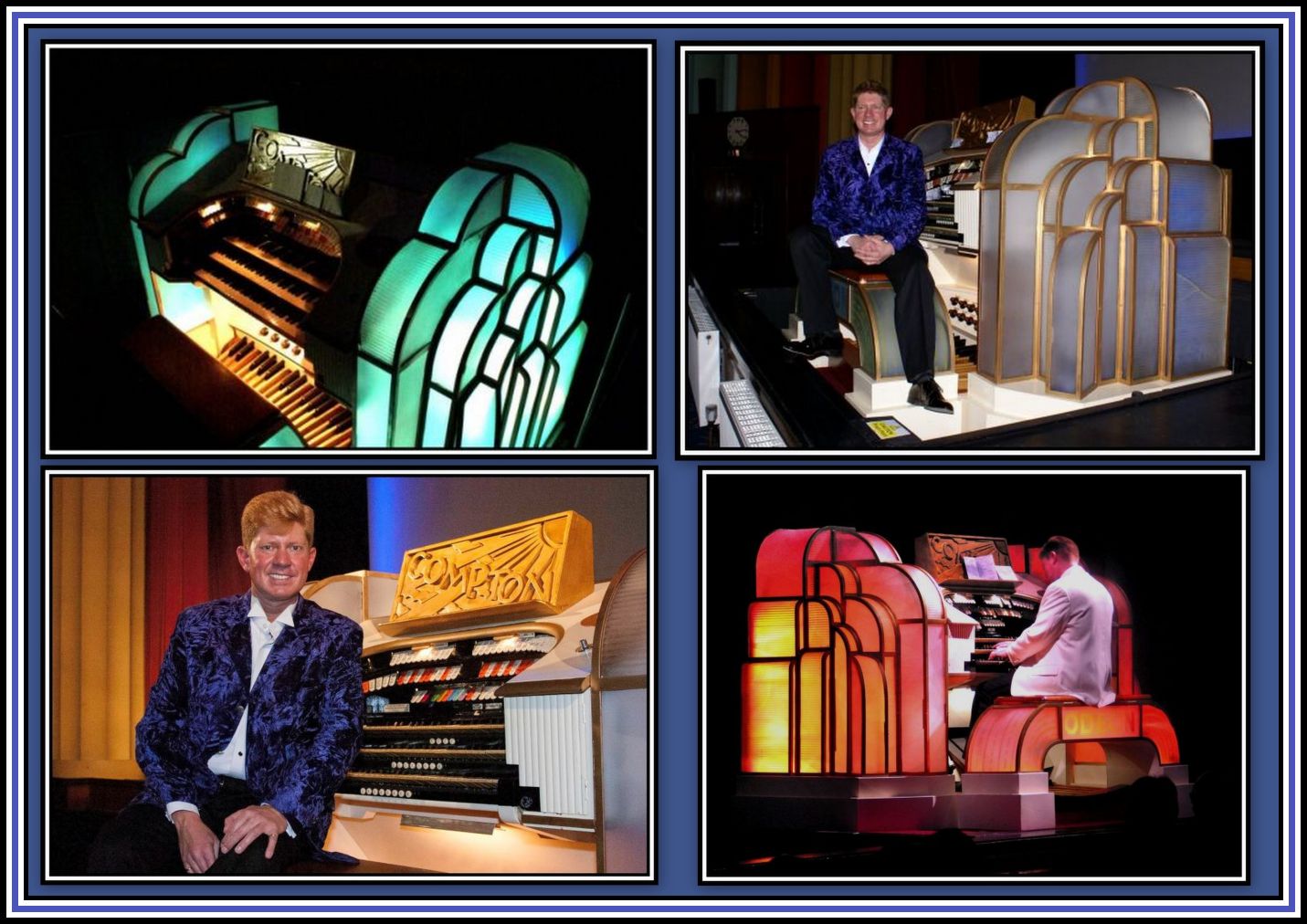 The Compton Theatre Organ with Robert Wolfe at the Console (2007)
The Compton Theatre Organ with Robert Wolfe at the Console (2007)
Lower Left: this photograph was provided by Fred Smedley
A Compton Theatre Organ was chosen for installation with 3-manuals and 6-ranks. Although the Organ did not have the common Compton feature of a Melotone, it did have a rare Solo Cello stop which involved a mechanical bow and pitching fingers, operated directly from the organ console.
-oOo-
MELOTONE: This is a device fitted to the Compton Theatre Organ, which provided new tonal effects by purely electrical means. Whether used alone or in combination with pipe ranks, it furnished tone colours otherwise not available. Expression was given by the normal use of the Swell Pedal and Tone could be made to die away gradually by the Echo Control;
SOLO CELLO: was an amplified cello string whereby a rotating resin wheel touched the string as soon as this stop was applied. Mechanical fingers at the desired harmonic points touched the string as the notes were played. Due to the complexity of this device it was prone to failure and also impossible to keep in tune with the rest of the organ which is most probably why it fell out of favour almost from the start and was replaced by the Melotone.
-oOo-
Click here to go to the GLOSSARY of The Theatre Organ
-oOo-
The two Organ Chambers containing ~600 tightly packed organ pipes were installed on the roof of the building and the sound escaped into the Auditorium through decorative plaster coves above the Proscenium.
The Accompaniment Chamber (left) house the Open Flute and Violoncello ranks together with the Chrysoglott/Vibraphone Unit and the non-tonal Percussions and effects, as well as the Action Relays.
The Solo Chamber (right) house the Tibia, Oboe, Vox Humana and Tuba ranks, in addition to the Glockenspiel, Xylophone and Cathedral Chimes. This is also where the Solo Cello is maintained.
-oOo-
At the start of each performance, the Console would rise up to great effect from the Orchestral Pit by way of a lift (always a magnificent sight to see!).
The Theatre was opened on Saturday, the 25th May, 1935 with Alfred Richards at the Theatre Organ.
-oOo-
Although the Theatre/Cinema has undergone a number of changes over the years, The Organ remains in place today and may be seen from the former Circle, known as Screen 4.
-oOo-
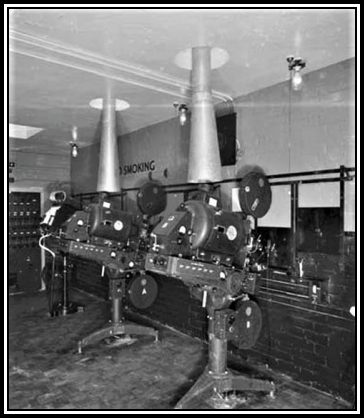 Projection Cameras used at the time of Opening of The Odeon Theatre Weston Super Mare
Projection Cameras used at the time of Opening of The Odeon Theatre Weston Super Mare
(Photograph reproduced with the permission of Historic England)
——-oooo000oooo——-
ACKNOWLEDGEMENTS
I would like to thank Messrs. Michael Wooldridge, Paul Bland and Peter Simpson for their conversation and help in the writing of this piece.
I would also especially like to thank Historic England for allowing photographs to be reproduced here.
Finally, I would like to thank Mr. Fred Smedley for the photographs that he sent me several years ago.
——-oooo000oooo——-

Regarding operational organs in their original homes, albeit not functioning as cinemas, The State, Kilburn retains its Wurlitzer. I understand it remains playable, although the church does not use it. The Apollo, Hammersmith (former Gaumont/Odeon) has its large Compton, fully restored and playable. 3 Granadas retain organs – Tooting (now Buzz Bingo), but unplayable owing to flood damage – Harrow, now Gold’s Gym – the 3/8 is complete, I’m unsure whether or not it remains playable – Walthamstow – the remains of the Christie are still there and plans are in place for its restoration, but there is no timescale for that. State, Grays – Wetherspoons are looking to dispose of it, the roof leaks and, I believe, most of the metalwork and pipes have been stolen. The New Gallery has its Wurlitzer, hidden away within the store but maintained and playable. The former Polytechnic in Regent Street also has its Compton and this is used regularly for film performance. The Regal, Uxbridge retains its Compton, but the building has been divided. The auditorium is/was a nightclub, with the restored console in situ. The pipework remains in the former backstage/flytower area, now let to a different concern. Margate’s Dreamland complex retains its 4/19 Compton/Noterman and there are hopes this may be restored at some point.
One or two are rumoured to survive, possibly the pipework in the closed ABC/Forum, Liverpool; the pipework remains in the Capitol, Scarborough (an old Fitton & Haley), the little Conacher in the Picture House, Woodlands near Doncaster and, possibly another orchestral Conacher in Huddersfield. I suspect the pipework might remain in the former Savoy/ABC, Brighton, closed up in the original above-proscenium chambers. Who knows what might turn up.
Thanks very much for your insightful comments. They are much appreciated.